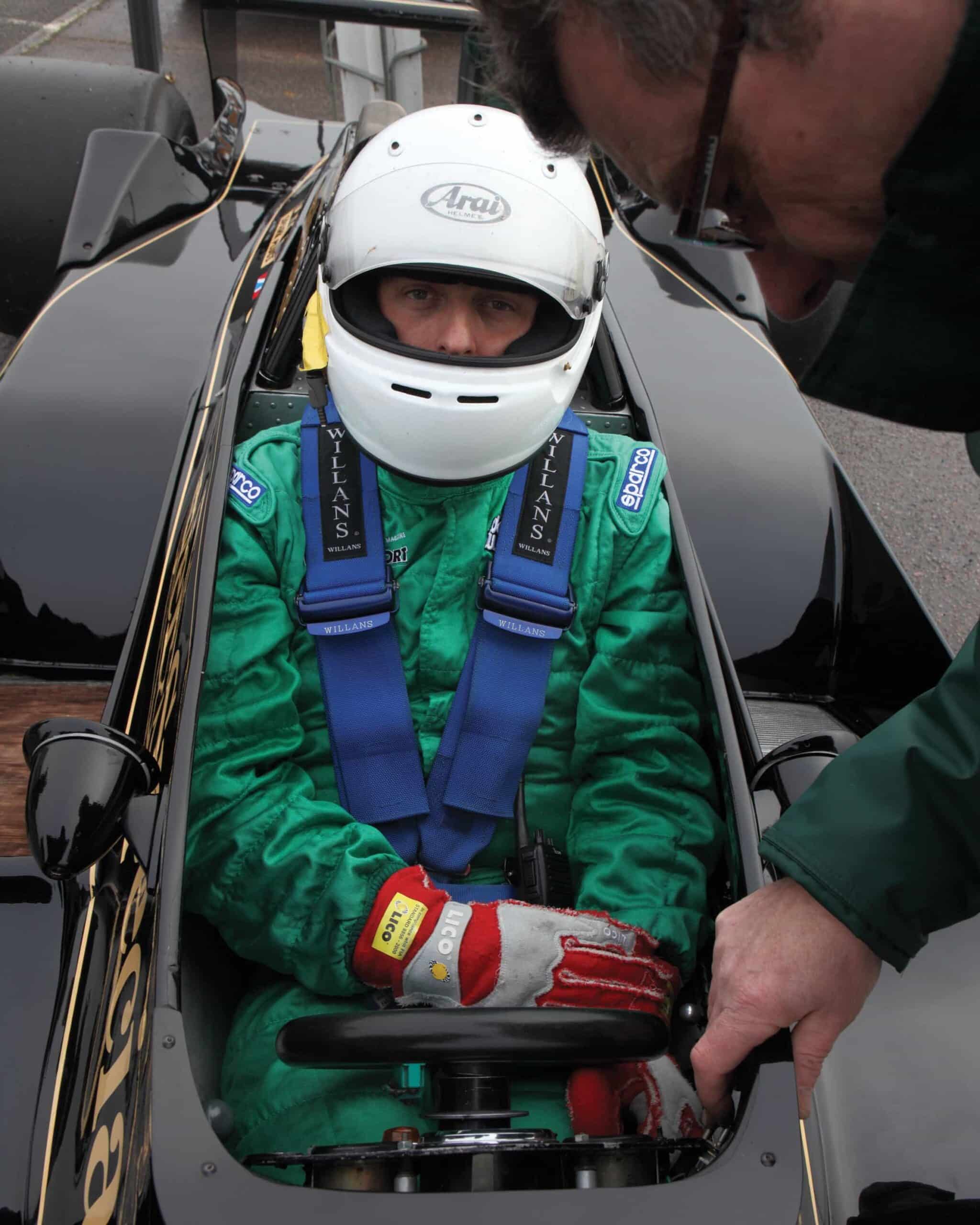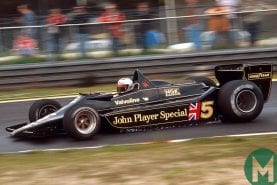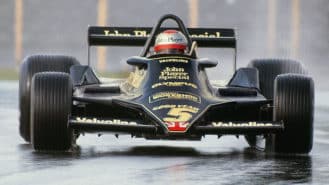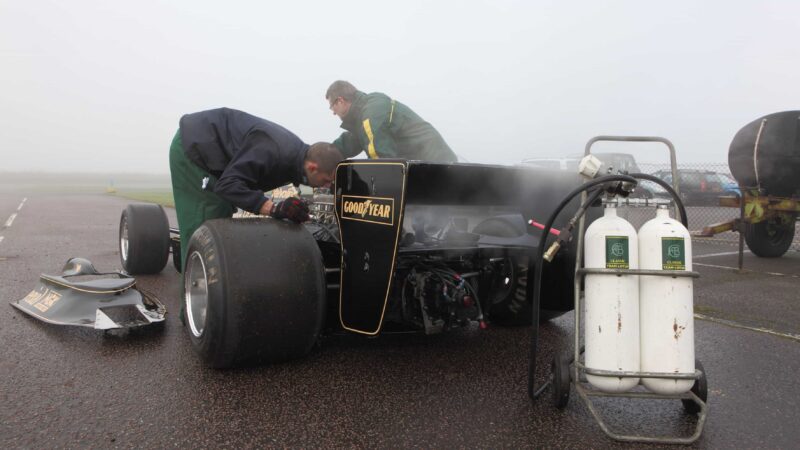Of the two other 79s, 79/1 was the development car and raced just once in 1978 (with Jean-Pierre Jarier to no great effect at Watkins Glen) before being sold to privateer Hector Rebaque for the 1979 season. The last car, 79/5, was built for the ’79 season, almost as if Colin Chapman knew he needed a long-stop in the event of the radical Lotus 80 failing to realise its potential.
Today, the 79 has another beauty, one conveyed on it by history. It seems scarcely believable now, but when it won Mario his championship, the era of the slicks-and-wings F1 car had not yet seen its 10th birthday. All we knew then was that, of those seen so far, it was the most beautiful of all. But now more than 30 further years have passed and I still cannot think of another that comes closer to visual perfection from more angles. If a spaceman fell to earth pondering the meaning of the phrase ‘if it looks right, it usually is right’, you could do no better than point him in the direction of this 79.
But there’s an added magic of this particular 79. Unraced since 1979, it’s not a recreation clinging to a chassis plate as some kind of identity – it’s all real. The tub, bodywork and even the engine and gearbox you see here belonged to this car in period. Clive is usually very relaxed about his cars being raced, but just a few are regarded as simply too important to risk compromising, and 79/3 is one of them. Gently restored to fully-functioning condition about 10 years ago, it goes to shows, has run up the Goodwood Hill and has attended other demonstrations, but that’s it. It is fabulously original.
“With this weather, you won’t get heat into any of the tyres we could put on it”
Today, its task is to carry me around the same Hethel test track upon which it would have been shaken down all those years ago. Sadly conditions are terrible – the air is a single degree above freezing, track conditions vary from quite damp to properly wet, and fog limits visibility to around 100 metres – not much for a car capable of making a Bugatti Veyron’s acceleration look very ordinary indeed.
Frankly, I’d been expecting a call to reschedule, but Classic Team Lotus – still staffed by ex-Team Lotus engineers – is made of sterner stuff. Chris Dinnage used to be Ayrton Senna’s chief mechanic but today he has the somewhat less edifying task of looking after me. Conditions are right on the cusp between slicks and wets, but the slicks stay on because they’ll look better in the shots. As Chris says, “in this weather you won’t get any heat whatever we put on”.
Before climbing aboard, there’s time to soak up a few last details. The front of the car represents standard F1 thinking of the era, but as your eyes pan back past the cockpit with its effective little wind deflector, things change. There’s no fuel in those long sidepods because, unlike the 78 that had three different fuel cells, all the 79’s petrol goes directly behind the driver, freeing up space for the venturi tunnels that would change the face of F1 racing. It still wears its skirts, too, but on a bumpy track like Hethel, they’re stowed in the pods. Simply dropping them to the floor doubles downforce.
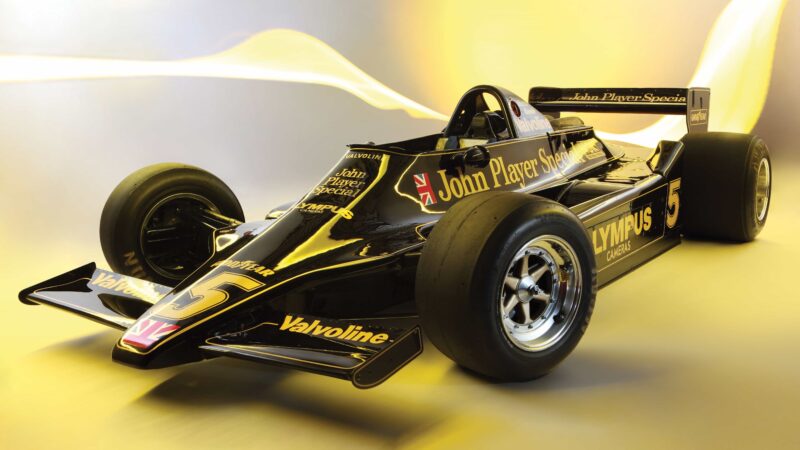
The Lotus 79 in all its glory
Likewise at the back, everything has been moved out of the way of the airflow under the car: brakes and springs are inboard and years of traditional suspension design was abandoned because longitudinal radius arms would have got in the way. In their place came wide-based wishbones. Indeed when work began on the 79, ground effect was the dominant principle around which the rest of the car was designed and, where needed, compromised. Even the air intakes that wrapped around the roll-hoop of a 78 were abandoned as they interfered too much with the flow of air to the rear wing.
Needless to say, power is of the Cosworth DFV variety. The 79/3 runs a standard long-stroke engine to period specification which means around 480bhp at 10,600rpm, perhaps 80 more than the earliest DFVs, but at least 60 less than the maddest short-strokers have shown. As expected, it directs its power through a Hewland H-pattern gearbox, the Getrag sequential shift Chapman had intended proving insufficiently robust for racing.
